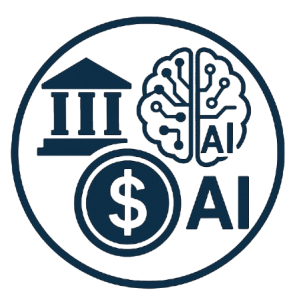Understanding Macroeconomics: Its Role in Policymaking
Macroeconomics, the study of the economy as a whole, plays a pivotal role in shaping national policies. It provides the framework for understanding the forces that drive economic growth, inflation, unemployment, and international trade. Governments rely on macroeconomic analysis to make informed decisions about fiscal and monetary policies, aiming to stabilize the economy, promote sustainable growth, and improve the overall well-being of their citizens. This article delves into the key concepts of macroeconomics and explores how they influence policy decisions.
Key Concepts in Macroeconomics
At its core, macroeconomics focuses on aggregate variables. Instead of examining individual markets or firms, it analyzes the total output of an economy, the overall price level, and the level of employment across the board. These aggregate variables provide a bird’s-eye view of the economy’s performance and allow policymakers to identify potential problems and opportunities. Gross Domestic Product (GDP), for example, measures the total value of goods and services produced within a country’s borders during a specific period, typically a year or a quarter. A growing GDP indicates economic expansion, while a declining GDP signals a recession. Similarly, the inflation rate, which measures the rate at which the general level of prices for goods and services is rising, provides insights into the stability of the economy. High inflation can erode purchasing power and create uncertainty, while deflation, a decrease in the general price level, can discourage investment and consumption. The unemployment rate, another key indicator, reflects the percentage of the labor force that is actively seeking employment but unable to find it. High unemployment can lead to social unrest and economic hardship.
The Role of Fiscal Policy
Fiscal policy, one of the primary tools governments use to influence the economy, involves government spending and taxation. By adjusting its spending levels and tax rates, the government can stimulate or restrain economic activity. For instance, during a recession, the government may increase spending on infrastructure projects or reduce taxes to boost aggregate demand and create jobs. This is known as expansionary fiscal policy. Conversely, during periods of high inflation, the government may decrease spending or raise taxes to cool down the economy. This is referred to as contractionary fiscal policy. The effectiveness of fiscal policy depends on several factors, including the size of the fiscal stimulus, the timing of its implementation, and the responsiveness of the economy to changes in government spending and taxation. Governments must carefully consider these factors when designing fiscal policies to ensure they achieve the desired outcomes without creating unintended consequences, such as increasing the national debt to unsustainable levels. see more about Japanese cuisine.
Monetary Policy and its Impact
Monetary policy, another crucial tool for macroeconomic management, involves managing the money supply and credit conditions to influence interest rates and inflation. Central banks, such as the Federal Reserve in the United States or the European Central Bank in Europe, are typically responsible for implementing monetary policy. By lowering interest rates, central banks can encourage borrowing and investment, thereby stimulating economic growth. Conversely, by raising interest rates, they can curb inflation and prevent the economy from overheating. Central banks also use other tools, such as reserve requirements and open market operations, to influence the money supply and credit conditions. The effectiveness of monetary policy depends on the credibility of the central bank, the responsiveness of businesses and consumers to changes in interest rates, and the state of the global economy. For example, if interest rates are already very low, further reductions may have limited impact on stimulating economic activity.
Addressing Unemployment and Inflation
One of the primary goals of macroeconomic policy is to maintain a low and stable rate of unemployment while keeping inflation under control. These two objectives are often in conflict, as policies designed to reduce unemployment can sometimes lead to higher inflation, and vice versa. This trade-off is known as the Phillips curve. Policymakers must carefully weigh the costs and benefits of different policy options when addressing unemployment and inflation. For example, if unemployment is high, the government may implement expansionary fiscal and monetary policies to stimulate demand and create jobs. However, this could also lead to higher inflation if the economy is already operating near full capacity. Conversely, if inflation is high, the central bank may raise interest rates to cool down the economy. However, this could also lead to higher unemployment if it reduces investment and consumption.
The Importance of International Trade
International trade plays a significant role in the macroeconomy, influencing economic growth, employment, and the balance of payments. Exports, goods and services sold to other countries, contribute to a country’s GDP and create jobs. Imports, goods and services purchased from other countries, reduce a country’s GDP but provide consumers with access to a wider variety of goods and services at lower prices. The balance of payments, which tracks all economic transactions between a country and the rest of the world, provides insights into a country’s trade competitiveness and financial stability. Governments use trade policies, such as tariffs and quotas, to influence the level and composition of international trade. However, these policies can have both positive and negative effects on the economy. For example, tariffs can protect domestic industries from foreign competition but can also raise prices for consumers and harm export industries.
Forecasting and Economic Modeling
Macroeconomic forecasting and economic modeling are essential tools for policymakers. These techniques allow economists to predict future economic trends and assess the potential impact of different policy options. Economic models are simplified representations of the economy that capture the key relationships between different variables. These models can be used to simulate the effects of changes in government spending, taxation, or monetary policy. Macroeconomic forecasts are based on a combination of economic data, statistical techniques, and expert judgment. These forecasts are used by policymakers to make informed decisions about fiscal and monetary policies. However, it is important to recognize that economic forecasts are not always accurate, and policymakers should be prepared to adjust their policies as new information becomes available. Accurate data is also crucial; read more about the importance of economic data collection.
Conclusion: Guiding Economic Stability and Growth
In conclusion, macroeconomics provides the essential framework for understanding the complexities of the economy and guiding policy decisions. By analyzing key indicators such as GDP, inflation, and unemployment, and by employing tools such as fiscal and monetary policy, governments can strive to stabilize the economy, promote sustainable growth, and improve the well-being of their citizens. While the challenges of macroeconomic management are considerable, a solid understanding of macroeconomic principles is crucial for effective policymaking and ensuring a prosperous future.












